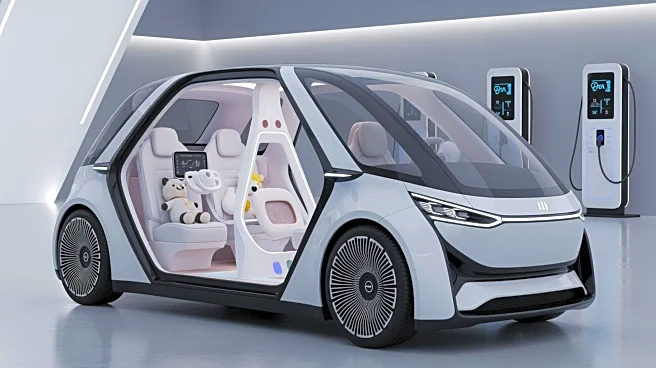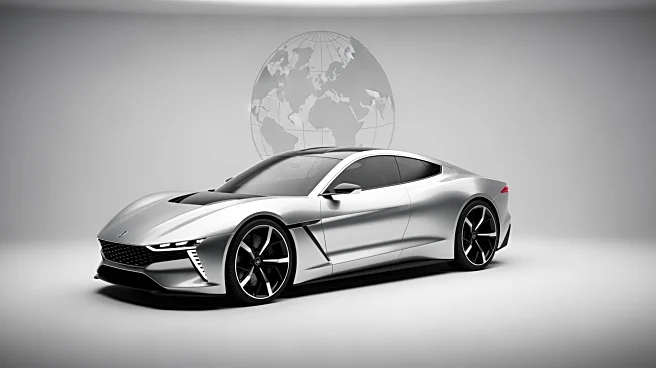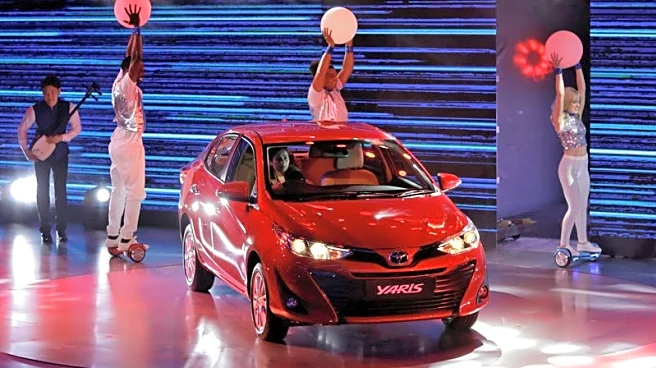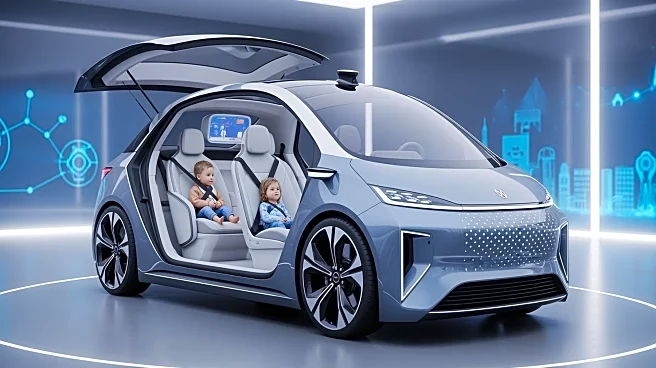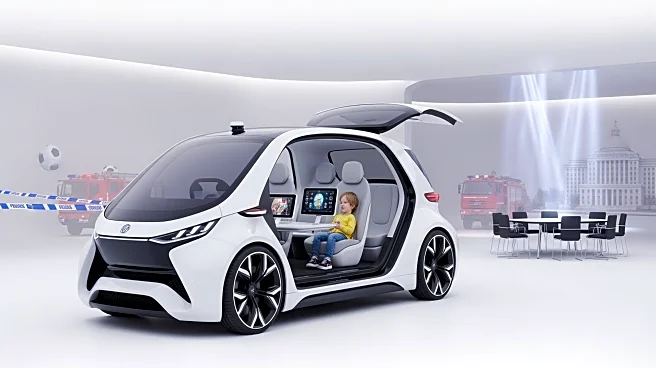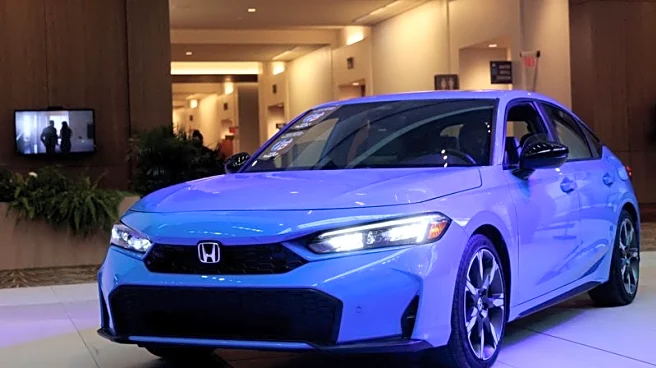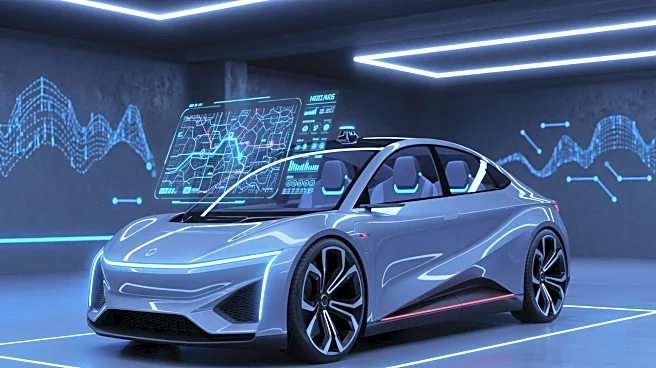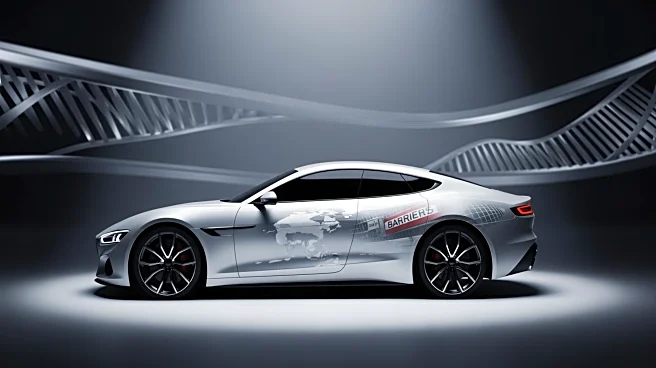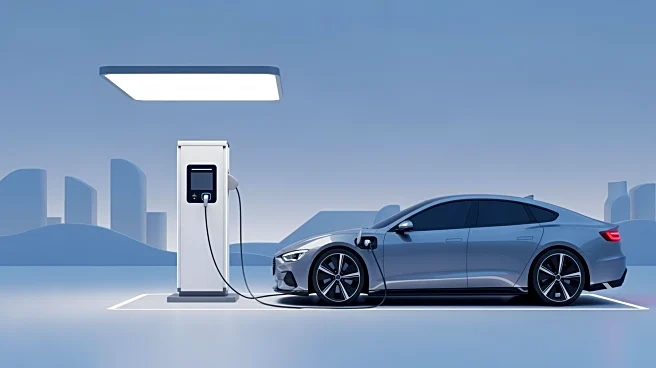What's Happening?
Toyota has unveiled a new autonomous car concept named Mobi at the Japan Mobility Show 2025. This innovative vehicle is designed specifically for children, resembling a floating pod more than a traditional car. Mobi is equipped with AI technology to autonomously
navigate, control speed, and maneuver through traffic. The vehicle features a UX Friend, an AI assistant that allows children to communicate with it based on their age. The design includes a fuzzy material for seating comfort and digital displays that mimic expressive eyes. Despite its futuristic appeal, Toyota has not indicated plans for further development or testing of Mobi, and its small size raises concerns about safety in accidents. The concept addresses a significant issue for parents, as a study by the AP-NORC Center for Public Affairs Research highlights that 56% of parents experience stress over their children's transportation.
Why It's Important?
The introduction of Mobi by Toyota highlights a potential shift in child transportation solutions, addressing a common stressor for parents. If developed further, such autonomous vehicles could alleviate the need for parental involvement in daily transportation, potentially increasing participation in extracurricular activities and reducing work-related disruptions for parents. However, the safety and practicality of such a concept remain in question, as the vehicle's small size may not withstand accidents. The concept also reflects broader trends in the automotive industry towards autonomous and AI-driven solutions, which could reshape transportation norms and parental responsibilities.
What's Next?
While Toyota has not committed to advancing the Mobi concept, its introduction could spark interest and investment in similar autonomous transportation solutions for children. Stakeholders in the automotive and technology sectors may explore the feasibility and safety of such vehicles, potentially leading to new regulatory considerations and market opportunities. Parents and educational institutions might also express interest in these developments, influencing future transportation policies and infrastructure.
